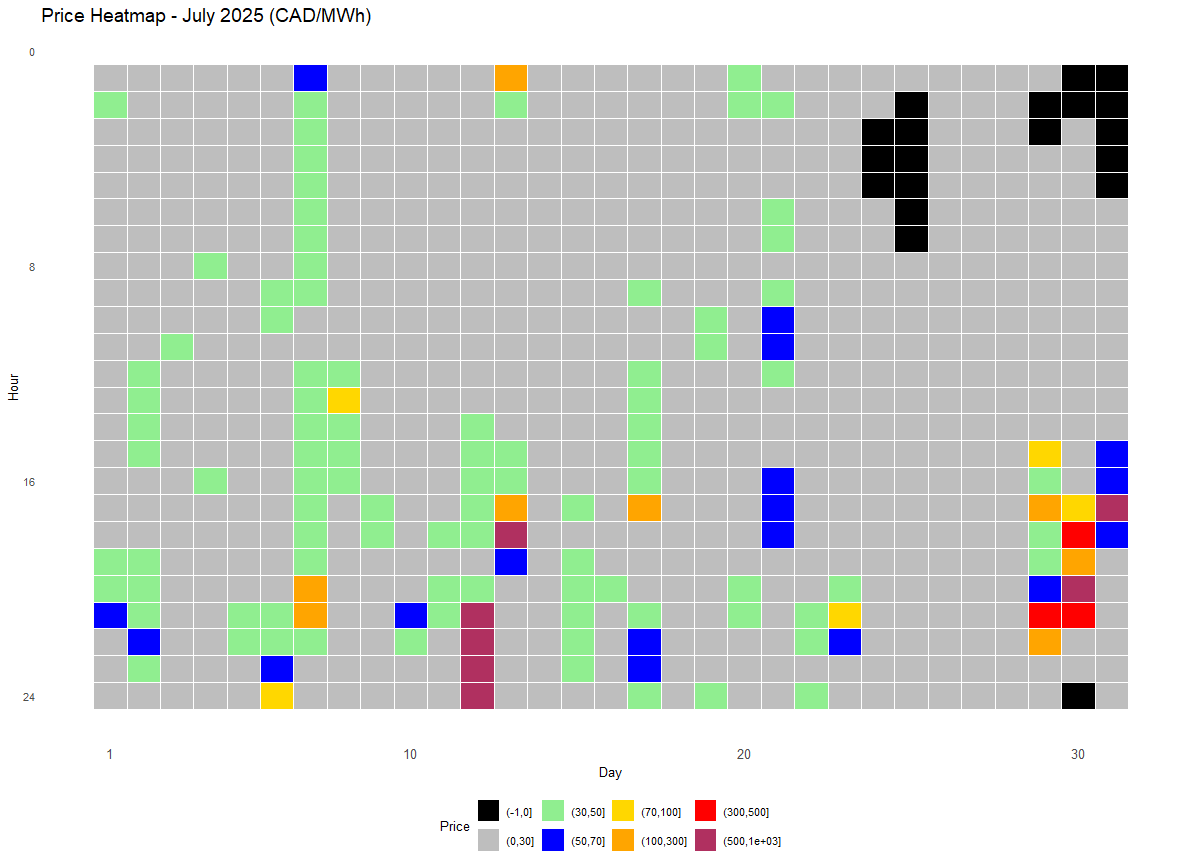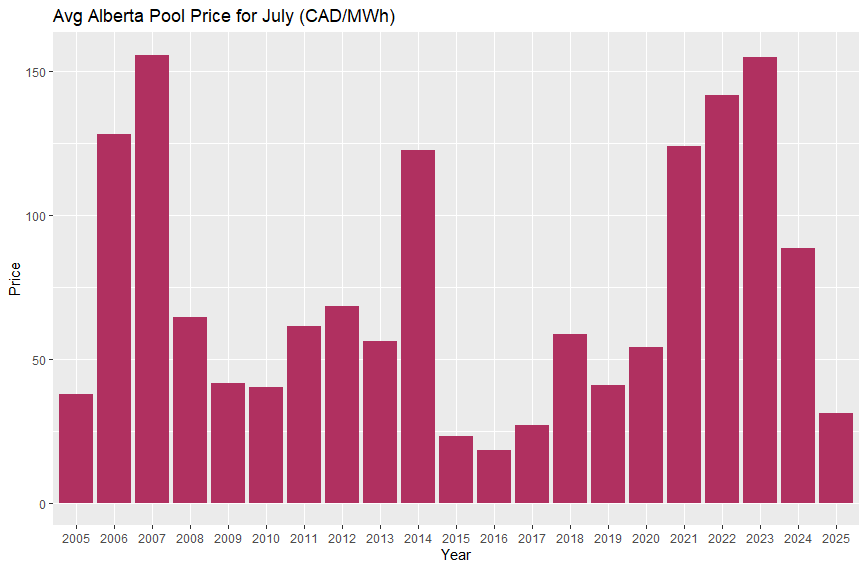Alberta Power Snapshot - July 2025
This July, the weather in large parts of Alberta reminded many of us of Vancouver. How did the colder and rainier weather reflect on the power market? Let’s find out.
[This article is not financial or investment advice, but provided for general information purposes only. All information is subject to change and should not be relied upon for any decision making. See Webpage Terms of Use.]
The Data
July did not feature the same power market drama we saw in June - but some records were still broken. But let’s start with a view at the big picture with an hourly price heat map:
Heat Map of July 2025 hourly Alberta power pool prices.
Vertical axis: hour of the day, from hour 0 on top to hour 24 at the bottom.
Horizontal axis: day of the month, from 1st to 31st.
Colors: Hourly pool price, with each block representing one hour
black - “zero-dollar” (CAD 0/MWh);
grey - “ultra cheap” (CAD 0.01-30/MWh),
light green - “cheap” (CAD 30-50/MWh),
dark blue - “normal” (CAD 50-70/MWh),
yellow - “expensive” (CAD 70-100/MWh),
orange - “very expensive” (CAD 100-300/MWh)
red - “extremely expensive” (CAD 300-500/MWh)
maroon - “peak prices” (CAD 500-1,000/MWh)
Other than a few price spikes in red / maroon and zero-dollar hours in black, it’s largely a “boring” picture with lots of ultra-cheap hours in grey.
The average monthly pool price was CAD 31.19/MWh, the lowest level since 2017, and the 4-th lowest since 2005 - another sign that the period of abnormally high prices has come to an end:
July average electricity pool prices, 2005-2025 (CAD/MWh
Prices are not inflation-adjusted
And as in prior months, the lower averages were largely driven by a disproportionate price decrease during the cheapest hours of each day. Accordingly, the average price of the daily lowest-cost 8 hours came in at just CAD 12.62/MWh. Only July 2012 had a lower figure at CAD 10.26/MWh, and inflation-adjusted even that number would be higher that this year’s.
Daily lowest-cost 8 hours, average for July, 2005-2025 (CAD/MWh)
Prices are not inflation-adjusted.
And we also saw a new record number of zero-dollar hours for the month of July: 19, after last year’s 9, which itself was a record back then dating back to at least 2005:
Monthly zero-dollar hours for July, 2005-2025
What does this mean? It’s further evidence that the market change is indeed structural, not cyclical. And it increases the stakes in the market restructuring that will kick off in 2026 with the Restructured Energy Market (REM), Optimal Transmission Planning (OTP) and Tariff Redesign.
More to come - and if you would like to explore opportunities in the meantime, please do not hesitate to reach out!
Alberta Power Fundamentals Training
If you follow our Alberta Power series of articles, you will already know that electricity us one of the most significant cost and value opportunities for Alberta's energy industry. On October 2nd, join us for a one-day training course covering the foundations of Alberta’s Electricity Market, designed for industry professionals and business leaders supporting the industry.





